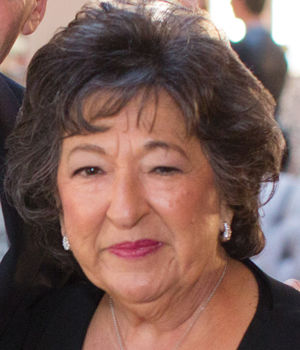Life’s a ‘circus’ – for real – for these St. Louisans
Published July 26, 2017
Last month, an article in the St. Louis Post Dispatch appeared on the front page with the headline: “St. Louisan Joins the Circus—Washington U. graduate juggles his way into a spot with Cirque du Soleil.” It goes on to say, “Being a professional juggler may seem to be an unlikely path for a Washington University graduate with a degree in German literature and an English language teaching certificate from the University of Cambridge, but it’s the path Thom Wall has taken.”
Wall, a native of St. Louis, went to Ladue Horton Watkins High School where he said his interest in juggling bloomed. He later started a juggling club and festival at Washington U.
The modern definition of a circus is based on the ancient word referring to the actual performance area, a circle of sorts, in which gladiatorial events, chariot races and the like took place.
ADVERTISEMENT
Today, circus performers are quite different. We think of acrobats, clowns, and trained animals. We also tend to think of the recently shuttered Ringling Bros. and Barnum & Bailey and the frenzied three-ring circus. But in reality as one of America’s oldest theatrical traditions, the circus started as a European transplant in the late 1700s and was perfected in the United States by the likes of John Bill Rickets, who established the first American circus in 1798.
Our own Mid-America Arts Alliance recently sponsored a traveling exhibition entitled, “Step Right Up” curated by Timothy Tegge, a longtime circus historian, collector, and performer. Tegge, a second-generation circus performer, was immersed in circus culture from the day he was born.
According to Jessica Hentoff, “The Circus Lady,” who performs with St. Louis’ Circus Flora and used to perform with New York’s Big Apple Circus, both one-ring circuses, a person doesn’t have to grow up in the circus or come from a circus family to be a good circus performer. Hentoff is the artistic/executive director of Circus Harmony, the region’s only year-round circus school and social circus program based in the City Museum.
ADVERTISEMENT
Hentoff travels with her troupe, the St. Louis Arches, to Circus Galilee, another children’s circus troupe. The Galilee Circus, which is located in Israel, is made up of both Jewish and Arab Israeli kids. The St. Louis children travel to Israel every other year and the Israeli kids come to St. Louis on the off years to perform together.
Hentoff says she has worked with people from 5 to 82 years of age. I’ve taught children of all labels — autistic, attention deficit, deaf, Down syndrome, physically handicapped, etc.,” she said. “Circus arts doesn’t require one skill set. Maybe you can’t juggle, but you can flip, or you can’t flip, but you have great balance and can walk the wire.”
St. Louis is very fortunate to have Circus Flora. Our city is one of only three in the country with an annual resident circus that also provides year-round educational outreach programs. The organization has played an important role in the renewal of circus as a performing art.
Circus Flora is recognized as the first circus in the United States to successfully tell a story using a plot and original live music. The narrative acts as a framework through which humans and animals perform in concert with one another. By integrating classic traditions of the circus with contemporary theater techniques, an ensemble cast, and compelling narrative, Circus Flora produces shows that consistently deliver wonder and world-class entertainment to audiences of all ages.
The late Ivor David Balding was the founder, artistic director and producer of Circus Flora. After working for Joseph Papp at the New York Shakespeare Festival, he founded the New Theater in New York and produced 21 plays. His productions were nominated for two Tony awards and won five Obie awards.
Just before Balding’s untimely death, he chose Jack Marsh to become the associate artistic director of Circus Flora. “This has been a year of changes for the circus industry, most notably with Ringling Brothers shutting their doors,” Marsh said. “With those events in the air, one might be tempted to dismiss circus as an outdated art form — one to look at with nostalgia, not one that is relevant to our modern lives.
“I believe that it is just the opposite, and that circus is more important than ever. In and age when we are dominated by devices and computer screens, we need magical live experiences that we can enjoy with our family, friends, and neighbors of all ages and creeds. We need real-life connection with the humans in front of us and next to us, and to be inspired by what they bring to the world.”
Cecil Mackinnon, theater director and featured Circus Flora performer, has appeared extensively with theater companies in New York. She also founded the Pickle Family Jugglers, a comedy-juggling act that expanded into the Pickle Family Circus. In 1994, she received the first Citizen’s Exchange Council grant to travel to Eastern Europe to research circus in transition.
Circus Flora has exceptional educational programs such as “Clowns on Call,” which brings the circus to hospitalized children. Lead by Claire Wedemeyer and other professional circus clowns, the program offers a magical distraction, engaging young patients in the circus arts while providing a respite from the world of medical tests and worry. Members of the St. Louis Symphony sometimes join Wedemeyer as she makes her rounds and provide a musical backdrop.
No question circus arts is relevant today in spreading joy to so many. Circus Flora and Jessica Hentoff’s Circus Harmony are two crown jewels in St. Louis’ thriving performing arts scene.
















